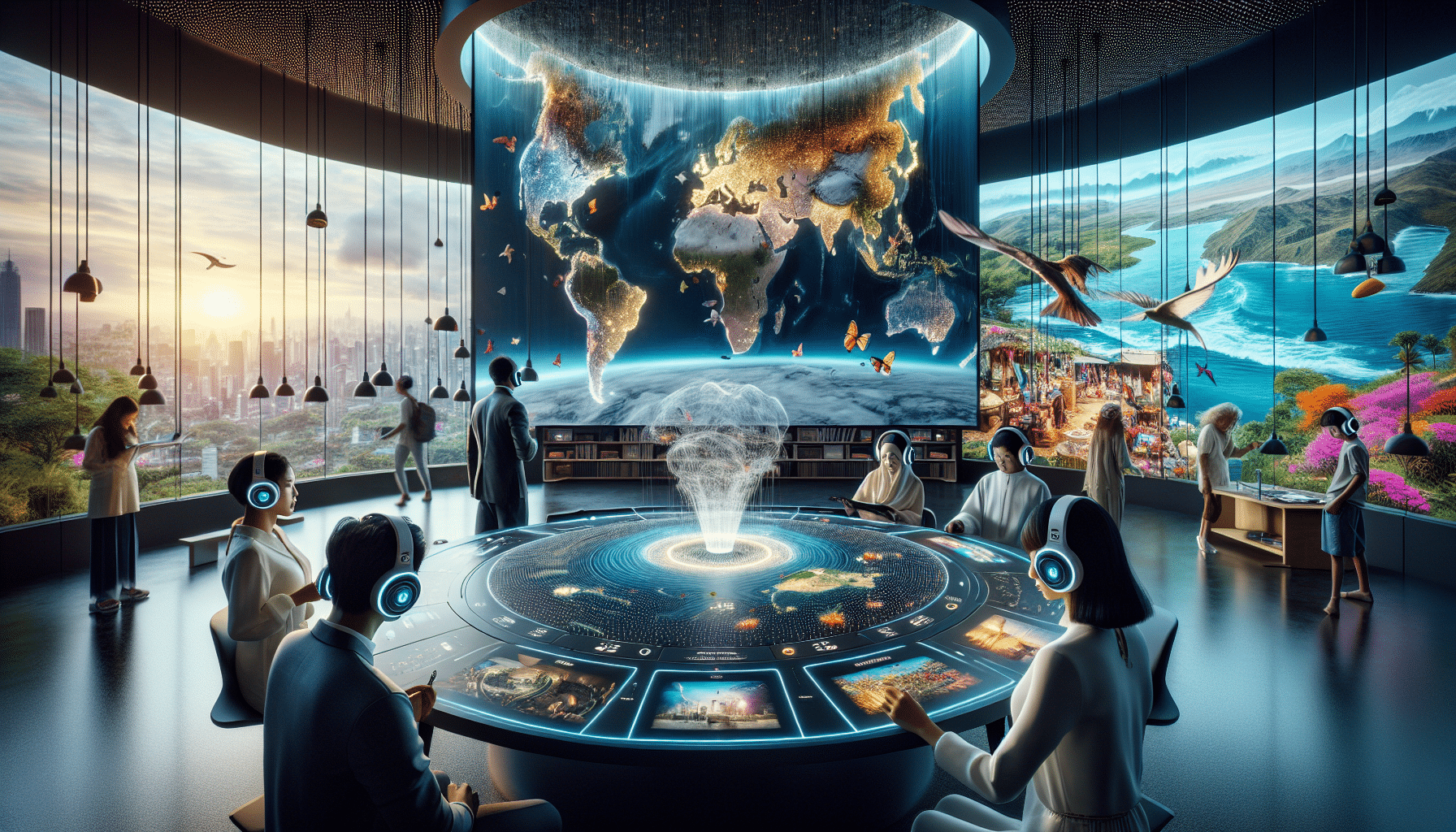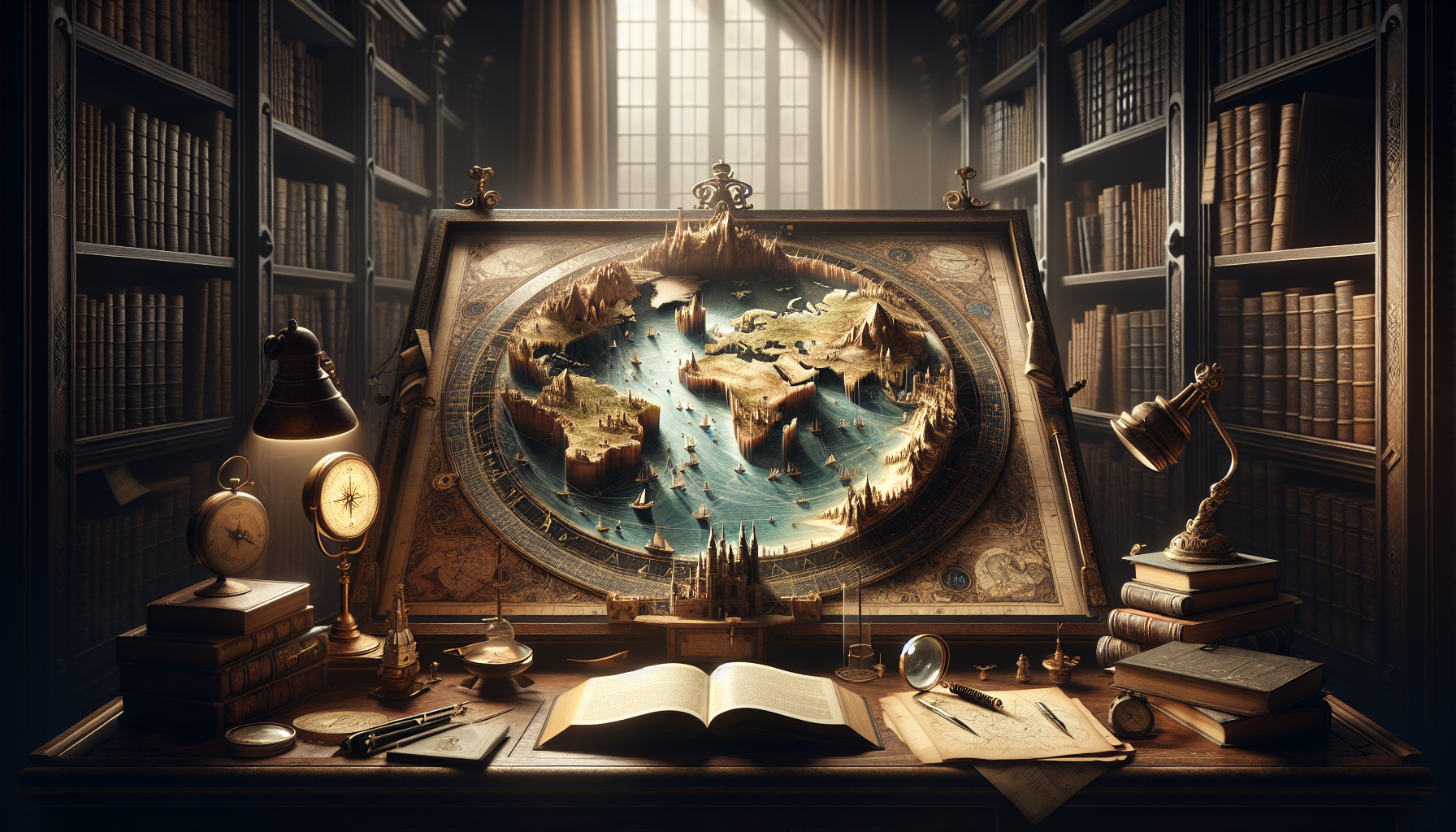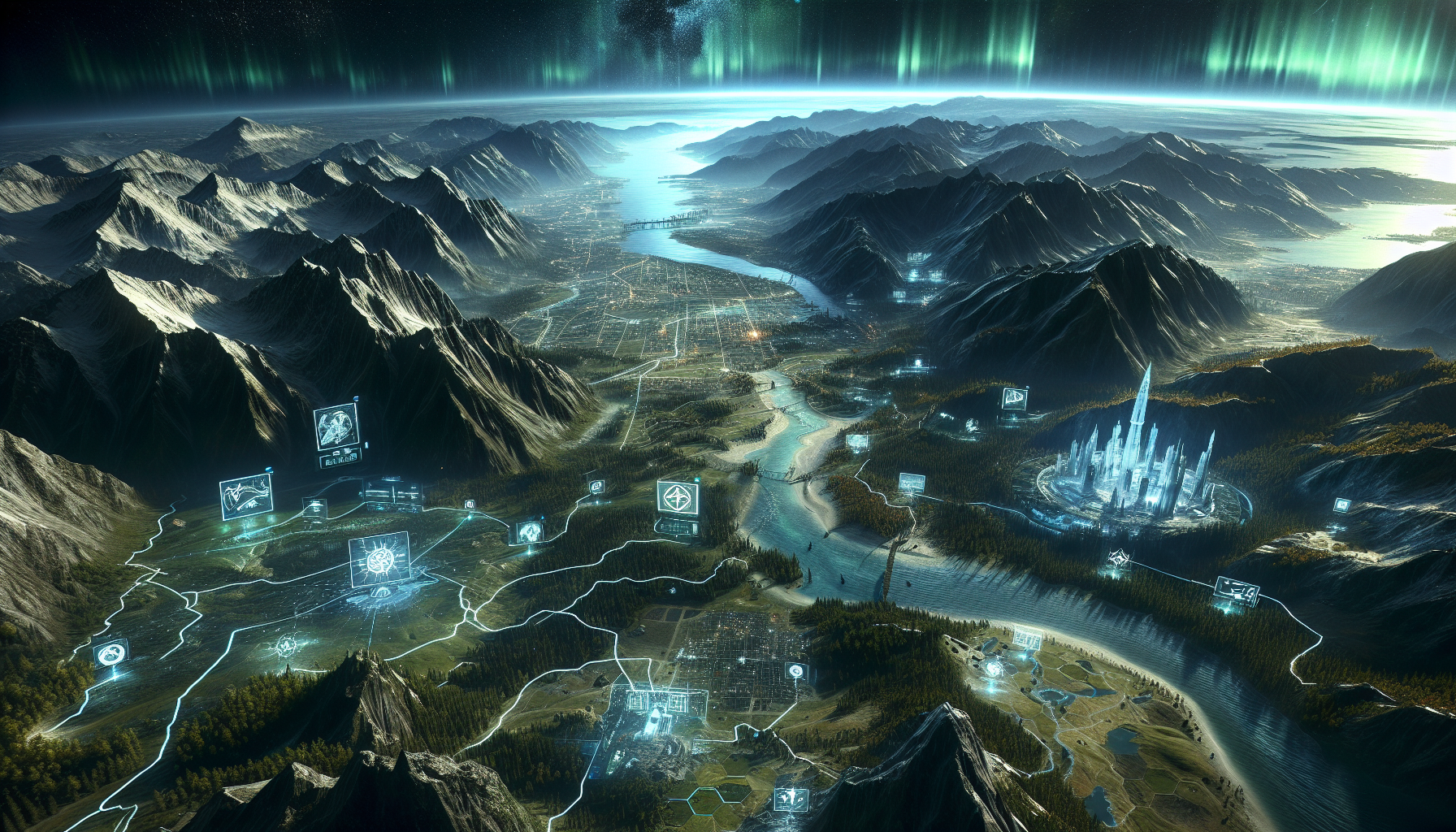In a world where visuals often dominate our perception of distant places, an auditory journey offers a refreshingly immersive way to explore the globe. Sound maps are transforming how we experience different cultures and environments by capturing the unique soundscapes of various locations. From the bustling streets of Tokyo to the serene wilderness of the Amazon rainforest, these auditory experiences allow us to hear the world like never before.
Imagine closing your eyes and being transported to a Parisian café, the soft murmur of conversation mingling with the clinking of coffee cups. Or picture standing amidst the vibrant cacophony of a New York City street, where the honking of taxis and the rhythm of footsteps create an urban symphony. Sound maps curate these auditory experiences, offering a rich tapestry of sounds that define each locale, enabling us to appreciate the world through our ears.
The beauty of sound maps lies in their ability to evoke emotions and memories, much like a favorite song or a familiar lullaby. They provide an opportunity to explore diverse soundscapes without leaving the comfort of your home, fostering a deeper connection to the places we dream of visiting. Whether it’s the soothing sounds of ocean waves crashing on a distant shore or the lively buzz of a local market, sound maps reveal the world in its raw and unfiltered sonic beauty.
This exploration into the realm of sound opens up new possibilities for education, inspiration, and relaxation. As we dive into the captivating world of sound maps, prepare to embark on an auditory adventure that transcends geographical boundaries, inviting you to discover the heartbeat of our planet through its myriad sounds. Let the journey begin, where each sound tells a story and every map becomes a gateway to the soul of a place. 🎧🌍
The Concept of Sound Maps
Sound maps offer a fascinating way to experience different locations through auditory senses. Unlike traditional maps that rely on visuals, sound maps provide an immersive experience that can transport listeners to distant places without ever leaving their current location. These maps compile the unique sounds of different areas, capturing everything from the bustling streets of New York to the serene natural sounds of the Amazon rainforest.
The primary goal of a sound map is to create a deeper connection with the environment by allowing individuals to hear the world in its natural state. These maps often include recordings from diverse sources such as wildlife, urban noise, local music, and even conversations, each telling a story about the location’s culture and environment. Sound maps can be particularly beneficial for those who are visually impaired, providing an alternative way to explore the world.
How Sound Maps Are Created
Creating a sound map involves several steps and requires a keen ear for capturing the essence of a place. The process typically begins with selecting locations that have distinctive soundscapes. These could be famous landmarks, remote natural settings, or vibrant urban areas, each offering a unique auditory experience. Sound artists or field recordists then travel to these locations equipped with high-quality recording equipment to capture the sounds.
The choice of equipment is crucial as it determines the quality and clarity of the recordings. High-fidelity microphones and recorders are essential to capture the nuances of different sounds, whether it be the chirping of birds at dawn or the distant hum of traffic. The recordist must also be mindful of the time of day and weather conditions, as these factors can significantly influence the soundscape.
Once the recordings are made, they are carefully curated and organized to form a coherent map. This may involve editing to remove any unwanted noise or adjusting the audio levels for a balanced listening experience. Some sound maps also incorporate geotagging, allowing users to navigate the map and listen to sounds based on their geographical location.
Benefits of Exploring Sound Maps
Exploring sound maps can offer numerous benefits beyond mere entertainment. For one, they provide a unique educational tool that can be used in classrooms to teach students about geography, culture, and environmental science. By listening to the sounds of different locations, students can gain insights into the daily lives of people around the world and the natural environment they inhabit.
For travelers, sound maps offer a way to experience a destination before even setting foot there. This can be particularly useful for planning trips, as it allows individuals to get a sense of the local atmosphere and vibe. Additionally, sound maps can serve as a form of escapism, offering a brief auditory vacation for those unable to travel physically.
Sound maps also have therapeutic applications. Listening to calming nature sounds or familiar urban noises can reduce stress and promote relaxation. In therapeutic settings, sound maps can be used as a tool for mindfulness and meditation, helping individuals to focus and calm their minds.
Popular Sound Map Projects
Several sound map projects have gained popularity due to their innovative approach to documenting and sharing the world’s soundscapes. Here are a few noteworthy examples:
- Radio Aporee Maps: This project allows users to upload and share their field recordings from all over the world, creating a collaborative sound map accessible to anyone with internet access.
- Sound Transit: An experimental project that offers a unique auditory journey by simulating a trip through various cities using sounds recorded at different locations.
- The Sonic Japan Project: Focused on capturing the unique soundscapes of Japan, this project provides listeners with an immersive experience of Japanese culture and daily life.
Table: Comparison of Popular Sound Map Platforms
| Platform | 집중하다 | Features |
|---|---|---|
| Radio Aporee Maps | Global | User-uploaded recordings, collaborative map |
| Sound Transit | Simulated Travel | Auditory journeys, diverse city sounds |
| The Sonic Japan Project | Japan | Japanese soundscapes, cultural immersion |
Future of Sound Maps
The future of sound maps looks promising as technology continues to advance. With improvements in recording equipment and increased access to digital platforms, the creation and sharing of sound maps have become more accessible than ever. This opens up possibilities for new projects and innovations that can further enhance the way we experience soundscapes.
Augmented reality (AR) and virtual reality (VR) technologies hold potential for sound maps, allowing users to not only hear but also interact with soundscapes in a more immersive manner. Imagine walking through a virtual forest and hearing the sounds of wildlife from different directions, or exploring a bustling city street with the ability to focus on specific conversations or music.
Moreover, as awareness of environmental issues grows, sound maps can play a crucial role in conservation efforts by highlighting the importance of preserving natural soundscapes. Projects that document endangered sounds can help raise awareness and encourage actions to protect these valuable auditory environments.

결론
In conclusion, sound maps present a revolutionary approach to exploring the world, offering an immersive auditory experience that captivates the senses and broadens our horizons. By allowing us to hear the unique soundscapes of diverse locations, from the rhythmic pulse of bustling cities to the tranquil whispers of nature, these maps bridge the gap between distant cultures and environments. Importantly, sound maps offer accessibility to individuals who are visually impaired, providing a gateway to explore the world in ways traditional maps cannot.
Moreover, the benefits of sound maps extend beyond exploration. They serve as powerful educational tools, offering insights into geography, culture, and environmental science. For travelers, they provide a sneak peek into destinations, aiding in trip planning and enhancing cultural understanding. Furthermore, in therapeutic contexts, sound maps can promote relaxation and mindfulness, offering solace in our fast-paced world.
As technology advances, the potential for sound maps expands with it. The integration of augmented and virtual reality promises even more immersive experiences, while conservation-focused projects highlight the importance of preserving our planet’s auditory heritage. Ultimately, sound maps enrich our connection to the world, encouraging a deeper appreciation for the diverse symphony of life that surrounds us. Explore the world through sound maps, and discover a new dimension of travel and cultural engagement. 🌍🔊
토니 산토스 디지털 지도 제작자이자 시각적 사고자이며, 놀랍도록 기이한 것들을 큐레이터로 활동합니다. ~에 아이사프그는 야생의 세계로 뛰어든다 기괴한 지도, 상상의 지리, 그리고 대안적인 지도학적 현실우리가 주변 세계를 보는 방식, 느끼는 방식에 대한 새로운 관점을 제공합니다.
그의 작업은 다음과 같은 믿음에 뿌리를 두고 있습니다. 지도는 단순한 항해 도구가 아니다. 그것은 인식, 기억, 상상, 심지어 신화로 통하는 관문입니다. 왜곡된 역사 도표부터 초현실적인 지형, 음모 지도, AI가 생성한 세계 구축까지 토니는 논리에 도전하고 호기심을 불러일으키는 지도를 제작하고 수집합니다..
스토리텔링, 예술 및 상징적 탐구 분야의 배경을 가진 Toni는 Aysapp을 플랫폼으로 사용하여 공개합니다. 잊혀진 장소, 보이지 않는 경계, 그리고 새롭게 상상된 현실. 그의 창작물은 '세상이 거꾸로 된다면 어떨까?'와 같은 질문을 던진다. 지도가 지리적 진실이 아닌 감정적 진실을 말해준다면 어떨까?
창조자로서 아이사프그는 임무를 수행 중입니다 호기심을 불러일으키다창의적인 사고를 장려하고 상상력, 문화, 공간적 스토리텔링의 교차점을 한 번에 한 개의 이상한 지도를 통해 탐구합니다.
🌀 그의 지도학적 우주는 다음을 탐구합니다.
-
비현실적이지만 의미 있는 풍경
-
감정, 기억, 그리고 지리로서의 신화
-
숨겨진 진실을 드러내기 위해 왜곡된 지도
당신이 판타지 세계를 좋아하는 사람이든, 지도 수집가든, 호기심 많은 여행가든, 아니면 특이한 것을 좋아하는 사람이든, 토니는 당신을 지도학적 상상력의 가장 특별한 구석으로 의도적으로 길을 잃도록 초대합니다.




